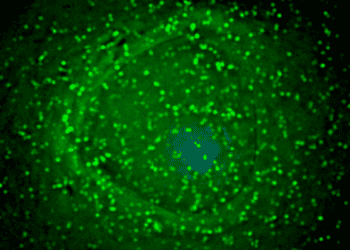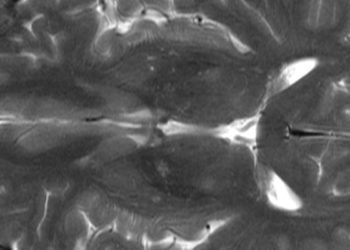Clinical prediction rule stratifies pediatric bacterial meningitis risk [Classics Series]
Image: PD
1. A Bacterial Meningitis Score of 0 accurately identified all children with aseptic meningitis in the study’s validation group.
2. The negative predictive value of a BMS score of 0 was 100% with a specificity of 73% in predicting bacterial meningitis. A BMS score of >2 was found to have a sensitivity and positive predictive value of 87% in predicting bacterial meningitis.
Original Date of Publication: October 4, 2002
Study Rundown: Bacterial meningitis is associated with significant morbidity and mortality. At the time of this study, many children found to have CSF pleocytosis were admitted for intravenous antibiotic therapy and blood culture monitoring while distinguishing bacterial from aseptic meningitis. As individuals diagnosed with viral meningitis can be managed as outpatients, this study sought to create and validate a clinical prediction rule to aid in identifying patients at low risk for bacterial meningitis. This was the first study to create and validate a multivariate scoring system to identify those pediatric patients at low risk for bacterial meningitis in the post-Hib era. Researchers were able to create a scoring system that accurately stratified patients at low and high risk for bacterial meningitis diagnosis. This study was limited in both its design and potential referral bias as evidenced by the high percentage of patient participants with bacterial meningitis (18%). Through use of this prediction rule, clinicians may be able to better identify patients who could be cared for outside of the hospital setting. Of note, this scoring system was further validated in a follow-up analysis published in JAMA in 2007.
Click to read the study in Pediatrics
Click to read the follow-up study in JAMA
In-Depth [retrospective cohort study]: 696 patients from 29 days to 19 years old diagnosed with bacterial, viral, fungal, or tuberculous meningitis as identified by hospital diagnostic codes were recruited from eight years of hospital records at a large, pediatric hospital. Patients were randomized into either a derivation or validation set. Patients were considered to have bacterial meningitis if their CSF sample grew bacteria or if they had CSF pleocytosis with a positive blood culture or positive CSF latex agglutination test. Patient charts were reviewed and analyzed for information regarding CSF characteristics, seizure occurrence, complete blood count data, CSF and blood culture results, and latex agglutination testing. 125 (18%) of the patients identified were diagnosed with bacterial meningitis and 571 (82%) with aseptic meningitis. Positive gram stain, CSF protein >80 mg/dL, seizure upon or prior to presentation, peripheral ANC >10,000 cells/mm3, and CSF ANC >10,000 cells/mm3 were identified as predictors of bacterial meningitis, with positive gram stain as the most significant predictor. A Bacterial Mengitic Score (BMS) ranging from 0 to 6 was created with presence of each predictor receiving 1 point except for a positive gram stain, which received 2 points. When applied to the validation set participants, a score of 0 accurately identified all children with aseptic meningitis and did not misclassify any cases of bacterial meningitis. The negative predictive value of a BMS score of 0 was 100% for bacterial meningitis with a specificity of 73%. A BMS score of >2 was found to have a sensitivity and positive predictive value of 87% in predicting bacterial meningitis.
© 2013 2minutemedicine.com. All rights reserved. No works may be reproduced without expressed written consent from 2minutemedicine.com. Disclaimer: We present factual information directly from peer reviewed medical journals. No post should be construed as medical advice and is not intended as such by the authors, editors, staff or by 2minutemedicine.com. PLEASE SEE A HEALTHCARE PROVIDER IN YOUR AREA IF YOU SEEK MEDICAL ADVICE OF ANY SORT.







